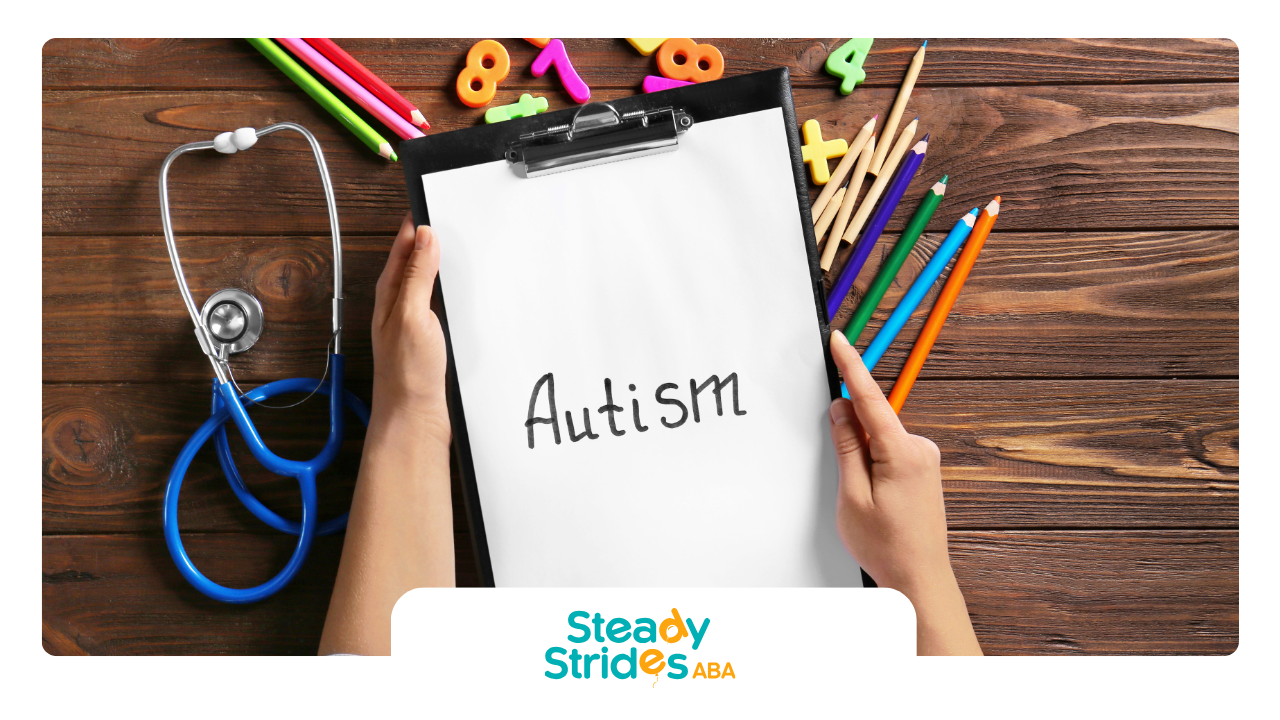Key Highlights
- This blog post explores the relationship between ABA therapy and traditional schooling for children with autism.
- We'll discuss how ABA can support school readiness and improve classroom experiences.
- Discover the differences in the educational frameworks of ABA and traditional schools.
- Learn about integrating ABA principles into school settings and the potential benefits and challenges.
- Understand the importance of collaboration between parents, educators, and ABA therapists for optimal outcomes.
Introduction
Navigating ABA therapy and how it fits with formal education can be hard for parents of children with autism. This article wants to help you understand the roles of both ABA therapy and the traditional school environment in a child's growth. We will look at how these two systems connect and discuss if ABA therapy can or should take the place of formal education.
Understanding ABA Therapy and Its Role in Autism
Applied Behavior Analysis (ABA therapy) is a well-known treatment for people with autism spectrum disorder (ASD). It is based on behavior analysis. ABA therapy looks at how behavior connects to the environment. Therapists analyze behaviors thoroughly to find triggers. Then, they create personalized plans to teach new skills and handle tough behaviors.
During ABA therapy sessions, therapists break down difficult skills into smaller steps. This method helps children with ASD learn better. Positive reinforcement is important in this process. Children get rewards for the behaviors we want to see, making learning fun and more effective.
The Basics of ABA Therapy for Newcomers
For those who do not know about ABA therapy, it is important to understand its main parts. ABA focuses on helping kids improve many skills. These skills include communication, social interaction, self-care, and being ready for school. The therapy is designed to match each child's strengths and challenges.
A key part of ABA therapy is positive reinforcement. This means giving rewards or praise when a child shows desired behaviors. This method encourages children on the autism spectrum to keep repeating those positive behaviors. Over time, this can lead to real progress.
It is also important to note that ABA therapy does not try to change who a child is. Instead, it helps give them the tools to succeed in different places like school, home, and the community.
How ABA Therapy Supports Children with Autism
ABA therapy offers strong support for children with ASD. It helps them manage a variety of challenges. ABA therapists use proven methods based on behavior analysis. They teach kids important social skills. This means helping them start and keep conversations. They also learn to read nonverbal signals and to interact well with others.
ABA therapy does more than work on social skills. It also aims to lessen troublesome behaviors that might make learning and fitting in hard. Therapists use positive reinforcement to show kids better ways to express their needs. They guide children in handling tough situations.
This focus helps kids with ASD create strong friendships. It allows them to join their communities better and to speak up for what they need.
Comparing ABA Therapy and Traditional Schooling
ABA therapy is very helpful, but it's important to know it does not replace traditional schooling. Both play different roles in a child's growth, and it's best when they work together.
Traditional schools offer a set structure for learning, social interaction, and different activities. Meanwhile, ABA therapy helps people with ASD address their unique needs. It gives them skills and strategies to succeed in a traditional school setting and in life.
The Educational Framework of Traditional Schools
Traditional schools have a set way of teaching designed for many different students. The school day usually includes planned classes in subjects like math, science, language arts, and social studies. In classrooms, students often learn together, with teachers guiding lessons and using standard tests.
This type of school can help many students, but it can be hard for kids with ASD. They may need special support to do well in school. Issues like being sensitive to sounds, having trouble with communication, and feeling anxious around others can make it tough for them to join in regular classes without help.
To meet these unique needs, many schools have started inclusive programs. They also offer special education services and work with ABA therapists to create a better and easier-learning space for children on the autism spectrum.
ABA Therapy as an Educational Tool: Scope and Limitations
Incorporating ABA therapy into the school setting can be highly beneficial. It allows for targeted interventions, skill generalization across environments, and collaboration between ABA therapists and educators. However, it's essential to recognize the scope and limitations of ABA within a school context.
| Scope | Limitations |
|---|---|
| Individualized behavior plans | Time constraints within a school day |
| Skill generalization to the classroom | Limited availability of trained ABA staff in schools |
| Collaboration with teachers and parents | Funding constraints for ABA services within schools |
While ABA can address many of a child's unique needs, it doesn't replace the comprehensive curriculum and socialization opportunities offered by schools. Instead, it serves as a powerful tool to enhance a child's ability to access and benefit from the educational experience.
Integrating ABA Therapy with School Curriculum
When used together, ABA therapy and schools can create a strong partnership. The most important part is having good communication and teamwork between parents, teachers, and ABA therapists.
By putting ABA principles in both the classroom and at home, families and educators can connect therapy with school. This teamwork helps provide steady support in a child's learning. It also aids their growth, making them ready for school and successful in their education.
Success Stories of ABA Integration in Schools
Many success stories show how useful ABA therapy is when used in schools. Children who used to have trouble with classroom routines, making friends, or controlling their behavior are now doing well. This is all due to personal support and the use of positive reinforcement.
For instance, some schools have added "sensory breaks" to their school day. These breaks help kids who are sensitive to different sounds or lights to calm down. Afterward, they can return to class ready to focus and learn. Some schools have also trained teachers in ABA techniques. This training helps teachers better support students with ASD and create a more welcoming classroom environment.
These stories show how important it is to be flexible, work together, and change traditional teaching methods to meet the needs of all students.
Challenges and Considerations for Educators and Parents
Integrating ABA into schools has many benefits, but it also comes with challenges that need attention. One big concern is that school staff need special training. Teachers and administrators may need professional development to use ABA practices well and help students with ASD.
There are also practical issues, like scheduling and limited resources, that might make it hard to integrate ABA smoothly. Good communication is very important. Parents, ABA therapists, and school staff must talk openly. It is crucial for parents to support their child's needs, join IEP meetings, and keep a good talk going with teachers.
By facing these challenges directly, schools can work together better. This teamwork helps ensure that children with ASD get the support they need to do well in the school environment.
Conclusion
In conclusion, ABA therapy is very important for helping children with autism. It offers a special way of learning that goes beyond regular school. While it is not meant to replace school, adding ABA therapy to the classes can improve the learning experience and build important skills. Success stories show the good effects of using this method, even with the challenges that teachers and parents might encounter. By knowing what ABA therapy can and can't do, we can create spaces that support all learning needs well. Embracing ABA therapy with school offers new chances for full development. It helps children with autism to grow and succeed.
Frequently Asked Questions
Can ABA therapy be effectively integrated into school settings?
Yes, ABA therapy can work well in schools. When used carefully and with teamwork, it becomes a valuable tool. This helps students with ASD succeed and connect with their classmates.
How does ABA therapy compare to special education programs?
ABA therapy and special education programs both help students with disabilities, but they do it in different ways. ABA therapy is about behavior analysis. It uses special plans for each student. On the other hand, special education gives lessons that are changed to meet student needs. It also offers help within the school.
What are the key benefits of combining ABA therapy with traditional schooling?
Combining ABA therapy with regular school can bring many advantages. It helps students with autism connect better with their peers. It also enhances their success in classes by using positive reinforcement. Additionally, it improves their ability to apply skills learned in different situations.












